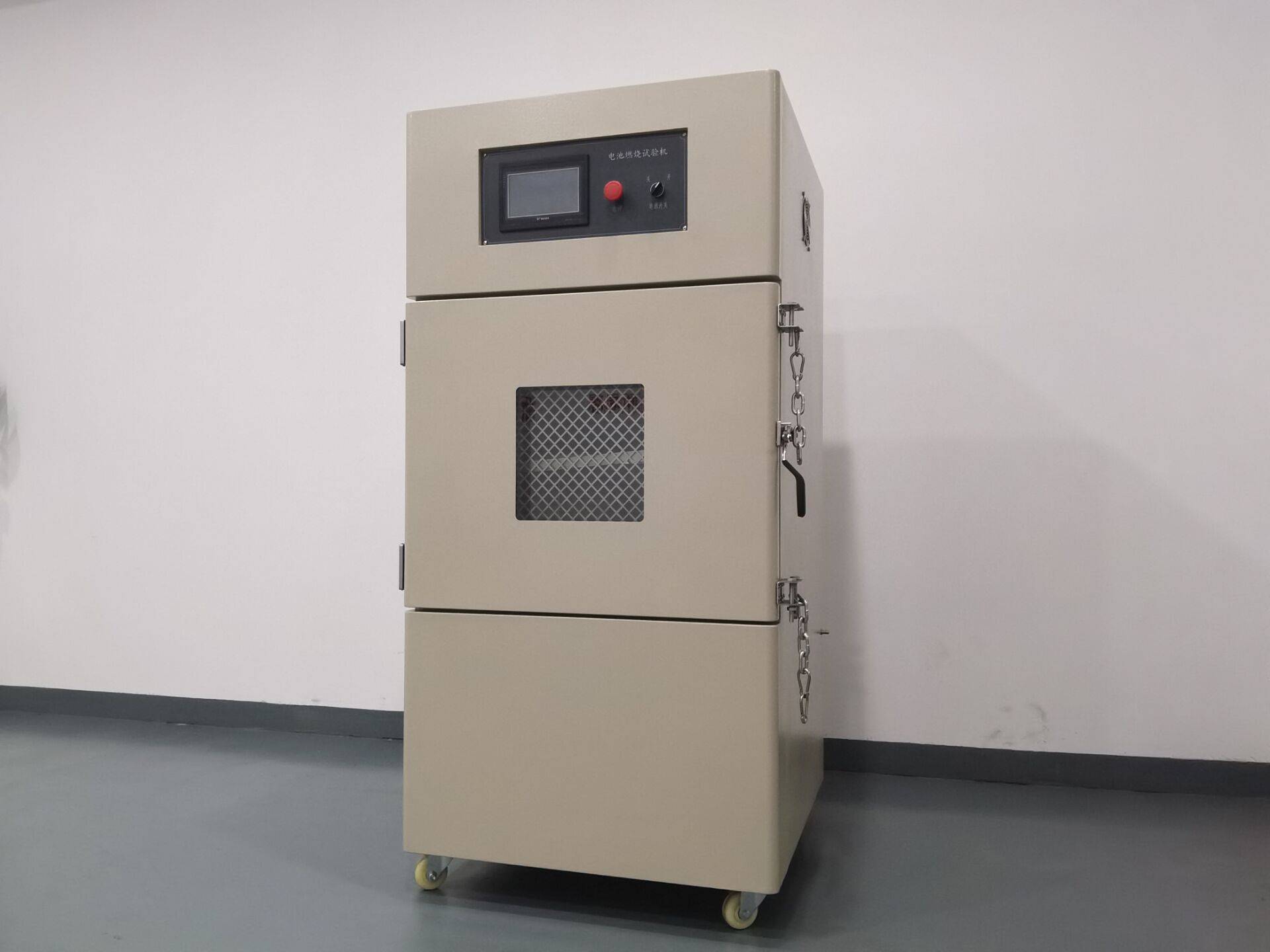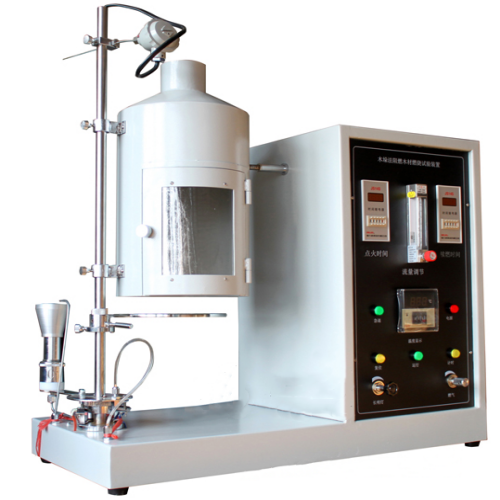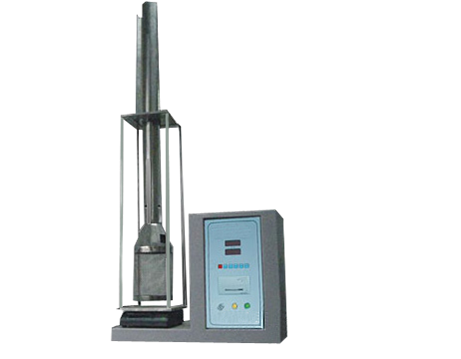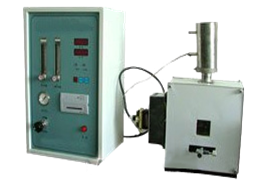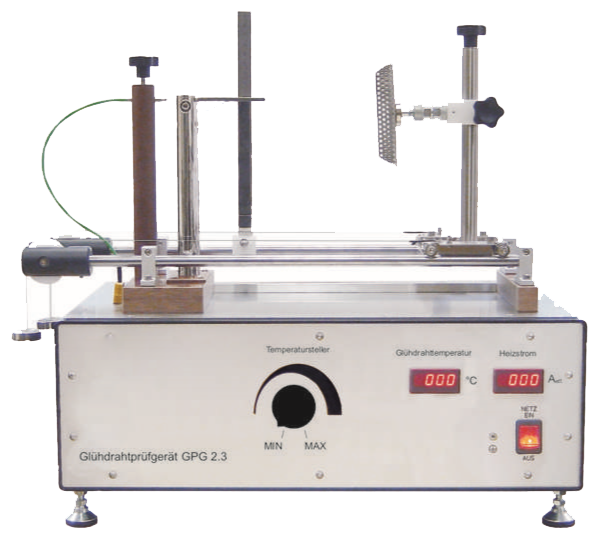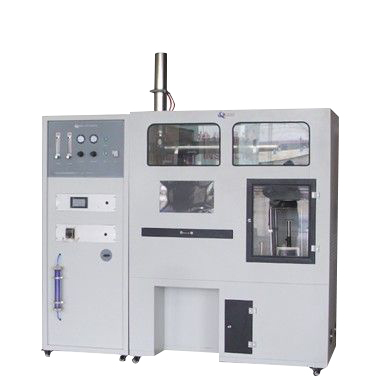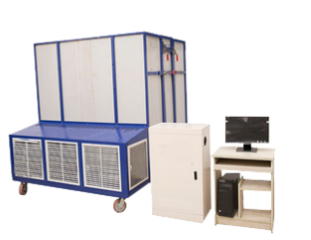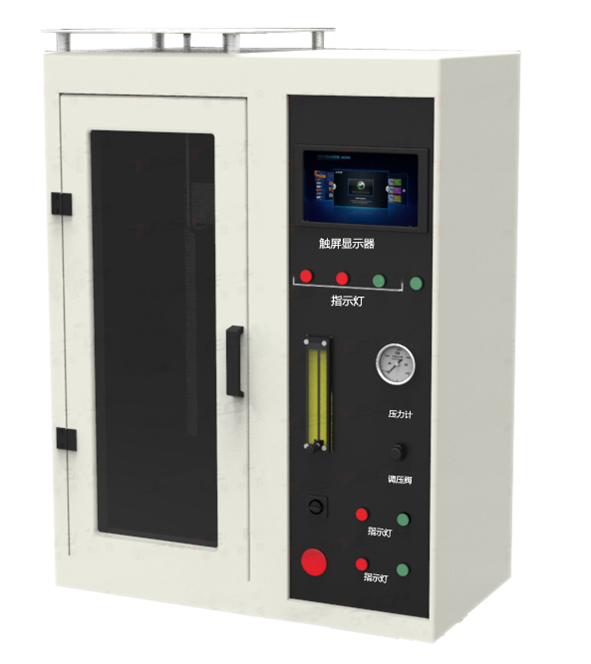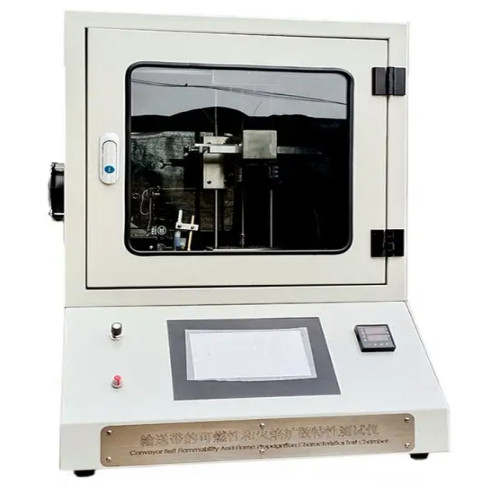Advanced Capillary Flow Porometer
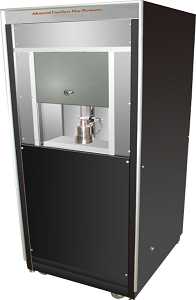
Advanced Automated Porometers yeild very objective, accurate and reproducible results, considerably reduce test duration, and require minimal operator involvement. The machine is fully automated and designed for linear turbulance-free test gas flow. The pressure is measured close to the sample and therefore, the correction term in the differential pressure measurement is minimized. Required amount of pressure is uniformly applied to the o-ring seals on the sample and the need for hand tightening the cap on the sample chamber is eliminated. Automatic addition of wetting liquid reduces test time appreciably. This sophisticated instrument has found applications in a wide variety of industries.
Principles
A wetting liquid is allowed to spontaneously fill the pores in the sample and a nonreacting gas is allowed to displace liquid from the pores. The gas pressure and flow rates through wet and dry samples are accurately measured. The gas pressure required to remove liquid from the pores and cause gas to flow is given by
D = 4 g cos q / p
where D is the pore diameter, g is the surface tension of liquid, q is the contact angle of liquid, and p is the differential gas pressure. From measured gas pressure and flow rates, the pore throat diameters, pore size distribution, and gas permeability are calculated.
Features
◆ No need to undo the sample chamber for wetting the sample. The sample is not disturbed during wetting. See-through sample chamber available for visual observation of test.
◆ Considerable reduction in test duration. Exactly the same area is tested. Results are more accurate and reproducible
◆ The sample chamber at the bottom of the piston rod contains o-rings on the outside to prevent leak between the insert and the sample housing of the sample chamber
◆ The need for cutting samples for testing is eliminated.
◆ Testing of small samples as well as complete parts
◆ Many sample geometries (example: sheets, rods, tubes, hollow fibers, cartridges, and powders)
◆ Use of many nonwetting liquids (example: water, alcohol, silwick and galwick)
◆ Tests in QC, research, or any number of user-defined modes
◆ See-through sample chamber available for visual observation of test
◆ Real-time graphical display. Windows-based software for all control, measurement, data collection, data reduction, and report preparation.Fully automated and computer controlled
Technical Parameters
Principles
A wetting liquid is allowed to spontaneously fill the pores in the sample and a nonreacting gas is allowed to displace liquid from the pores. The gas pressure and flow rates through wet and dry samples are accurately measured. The gas pressure required to remove liquid from the pores and cause gas to flow is given by
D = 4 g cos q / p
where D is the pore diameter, g is the surface tension of liquid, q is the contact angle of liquid, and p is the differential gas pressure. From measured gas pressure and flow rates, the pore throat diameters, pore size distribution, and gas permeability are calculated.
Features
◆ No need to undo the sample chamber for wetting the sample. The sample is not disturbed during wetting. See-through sample chamber available for visual observation of test.
◆ Considerable reduction in test duration. Exactly the same area is tested. Results are more accurate and reproducible
◆ The sample chamber at the bottom of the piston rod contains o-rings on the outside to prevent leak between the insert and the sample housing of the sample chamber
◆ The need for cutting samples for testing is eliminated.
◆ Testing of small samples as well as complete parts
◆ Many sample geometries (example: sheets, rods, tubes, hollow fibers, cartridges, and powders)
◆ Use of many nonwetting liquids (example: water, alcohol, silwick and galwick)
◆ Tests in QC, research, or any number of user-defined modes
◆ See-through sample chamber available for visual observation of test
◆ Real-time graphical display. Windows-based software for all control, measurement, data collection, data reduction, and report preparation.Fully automated and computer controlled
Technical Parameters
| Items | Parameters |
| Pore Size Range | 0.013 - 200 microns |
| Premeability Range | 1 x 10 -3 - 50 Darcies |
| Sample Size | 1.75” - 2.5” diameter |
| Maximum Pressure | 500 psi |
| Pressurizing Gas | Clean, dry, and compressed air or nonflammable and noncorrosive gas |
| Pressure Transducer Range | 0 - 500 psi |
| Flow Rate | 200 LPM |
| Resolution | 1 in 60,000 |
| Accuracy | 0.15% of reading |
| Mass Flow Transducer Range | 10 cm³/min - 500,000 m³/min |
| Power Requirement | 110/220 VAC, 50/60 Hz (others available) |
| Dimension | 61” H x 30” W x 26” D |
Note:QINSUN is very in place for textile testing and quality control,we have our own textile testing lab. Our textile testing equipment and testing methods are in the leading position in the industry. We have passed the textile testing certification and iso textile testing standards issued by a number of testing,We can provide textile testing equipment pdf manual. Sufficient inventory, big discounts, limited time promotion, Order now!
Leave Message Get Price



